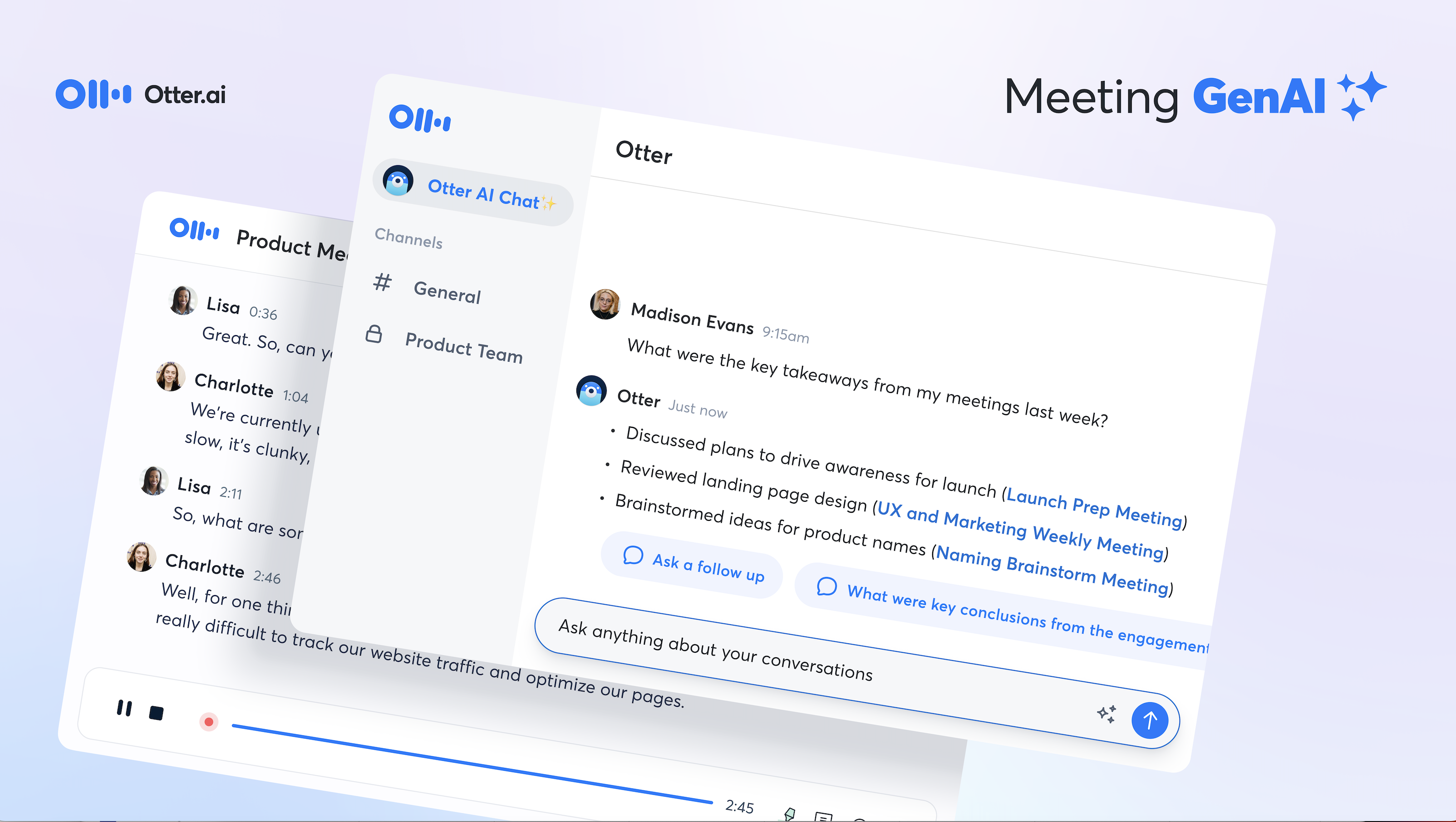Meetings are part of our professional lives – no work schedule is complete without them. But that doesn’t mean all meetings are productive endeavors; unfortunately, most are considered a waste of time!
That’s because it takes considerable time and resources to set one up. Employees have to take time away from productive work to prepare for unproductive conversations, which usually means interruptions in deep work.
In fact, 70% of all meetings keep employees from working and completing their tasks.
Not only this, the sheer amount of ineffective meetings incur huge expenses. Just look around the table during your next meeting and estimate the hourly salary of everyone there – that’s how much this little get-together is costing your organization.
That’s why it’s important to not conduct meetings just for the sake of them. You should have an agenda for every session and limit it to less than half-hour.
Here are some mind-boggling meeting statistics that may convince you:

The Meeting Trends Of 2021
Before 2020, organizations and businesses worldwide only dreamed of a world where meetings were held online. But the Covid-19 pandemic changed the landscape of meetings, and companies from all over the world experienced a massive influx of virtual meetings.
We have collected data from various surveys to see if the meeting trends are running in the right direction. This is what we gathered:
- The remote work model increased the weekly meeting time by 10%, thus resulting in three additional meetings per week, per employee
- 70% of employees experienced a 70% increase in meetings after work from home was initiated
- Since the pandemic, the rate of one-on-one meetings increased by 18%, and check-ins and team social meetings increased by 10%, with half the meetings taking place regularly
- It was also observed that the number of meetings attended by a worker on average rose by 13.5%
- The researchers found a 20.1% decrease in the average length of meetings
- The average meeting count rose from 5.9 meetings, which were observed before the lockdown, to 6.9 meetings
- In 2020, 36% of the meetings’ duration was evaluated to be 30 minutes, while only 20% of meetings ran for one hour
- The second most common meeting length was 15 minutes for 31% of the meetings held
- 44% of the group meetings in 2020 were limited to 4 to 7 people, while 24% of the meetings held fewer participants ranging from 4 to 5
Statistics are from the National Bureau Of Economic Research, Doodle and, Microsoft Workplace Insights
Meeting Preferences In 2021
- Survey results show that 29% of participants prefer Tuesday as the favorite meeting day, while 25% prefer Wednesday. Conversely, 47% perceive Monday as the worst day for meetings, while 40% choose Friday as the worst day
- Workers of all ages and industries consider arriving late to a meeting as the biggest ‘taboo.’
- Younger employees are 15% less likely to be bothered by cell phone usage, but they are 10% more likely to be bothered by people eating in meetings
- 78% of workers believe that their meeting schedules are chaotic. 38% assign fault to the upper management, while 16% blame their direct manager
- 64% of employees are more excited about meetings when they are well-planned. This is an exception for younger generations (18-29) year’s olds, 71% of whom voted free lunch as the most exciting factor for attending a meeting
Stats took from: Get Clockwise
Time Spent In Meetings – Statistics
Meetings constitute a huge part of work where many employees view it as a necessary task that keeps the company’s processes intact, and the team members engaged. But they fail to realize the amount of time spent on such meetings and their effect on its employees.
The staggering statistics surrounding the time spent on such meetings show a scary picture. Let’s find out the ugly truth about how meetings are a waste of time.
- 11 million meetings are held each day, which means that 55 million meetings are held per week, and 220 million meetings are held per year.
- 15% of an organization’s time is spent in meetings, which has increased every year since 2008.
- It has been observed that middle managers spend 35% of their time in meetings.
- The employees in upper management spend 50% of their time in meetings.
- Research suggests that employees spend 4 hours per week, preparing for status update meetings.
- A recent survey found that 67% of employees complain that spending too much time in meetings hinders them from being productive at work.
- More than 35% of employees found that they waste 2 to 5 hours per day on meetings and calls, but they achieve nothing to show.
Statistics are from Attentiv, KornFerry, The Muse, Cleverism.
Loss Of Productivity And Time Associated With Ineffective Meetings
Surely, meetings are an effective method for in-person communication, but they can often become frustrating and unnecessarily time-consuming. Most of the employees know how painful it is to get an email for a quick meeting in the middle of some important work.
But the impact goes deeper when more and more meetings have long-lasting consequences on the employees’ productivity or time and the organization's budget.
Here’s how meetings are affecting organizations and businesses.
- Most employees attend 62 meetings per month, where half of the meetings are a complete waste of time.
- Executives consider 67% of meetings a complete failure in communicating the sole purpose of conducting them.
- A survey suggests that 92% of employees find themselves multitasking during meetings.
- 41% of respondents confess that they often multitask or all the time during a meeting.
- 69% of employees check their email frequently during a meeting
- 49% of employees admitted that they do other unrelated work during meetings rather than paying attention to the meeting agenda.
- A report suggests that 91% of employees daydreamed during their meetings. In comparison, 45% felt overwhelmed by the sheer number of meetings they attended.
Statistics are from The Muse and Atlassian.
Now when it comes to productivity, recent meeting statistics suggest that,
- A survey of 182 senior managers found that 71% of them feel that meetings are unproductive.
- 45% of senior executives feel that productivity can be increased among the workforce only if meetings were limited to at least one day a week.
- Managers and professionals lose 30% of their time in meetings that they could have invested in other productive tasks.
- Ineffective meetings make professionals lose 31 hours every month, which sums up to 4 working days.
- Sitting in useless meetings drains an employee off their energy, brainpower, and stamina. After coming out of an unproductive meeting, an employee needs some time to recover, affecting their productivity.
- 44% of participants in a survey said that sudden or unscheduled meetings mean that they do not have enough time to focus on their work.
- 95% of meeting attendees lose focus and miss parts of the meeting, while 39% doze off at meetings.
Statistics are from Timely, HR Digest, Harvard Business Review, and Condeco.
The Cost Of Unproductive Meetings
Not only productivity and time, but meetings also affect the budget of an organization. They can easily be termed as one of the most expensive communication forms among employees in the workplace.
Here are some alarming numbers on the amount of money spent on setting up meetings:
- A survey of 6,500 people from the USA, UK, and Germany found that among the 19 million meetings that were observed, the ineffective meetings cost up to $399 billion in the US and $58 billion in the UK.
- Ineffective meetings cost up to $70 to $283 billion to the US economy.
- Suppose an average employee is making $60,000 per year and a company has 100 employees. In that case, the cost of meetings rises to $2,250,000, while the cost of unproductive meetings per year is $751,500.
Statistics are from Doodle, Inc, and ReadyTalk.

The Most Popular Methods To Connect In Meetings
With the growing trend of remote employees and the changing workplace, meetings have evolved. As technology advances, so has the ways that employees connect, communicate, and work.
The following are some statistics on the preferred channels of communication during meetings.
- 80% of respondents say that communicating virtually makes them more strategic with their daily work.
- 76% of professionals prefer face to face communication during meetings rather than calls or video conferencing.
- 7% of respondents prefer conference calls.
- 5% of the participants chose video calls as their preferred channel of communication.
- 4% of the respondents prefer instant messaging to communicate during meetings.
- 95% of professionals deem meeting in person more effective in fostering relationships at work.
- Over 47% of professionals feel that instant messaging is better at building relationships at work.
Statistics are from International Search Consultants, Medium, and Insider.
These are some of the most surprising statistics that you can use. If you want to create more productive meetings in your company and enhance employee performance, Otter.ai might be the tool you need. Otter.ai can help your team save time, cut down on stress of virtual meetings, and create a thriving remote work environment. Sign up for a free trial today!
Further reading:







